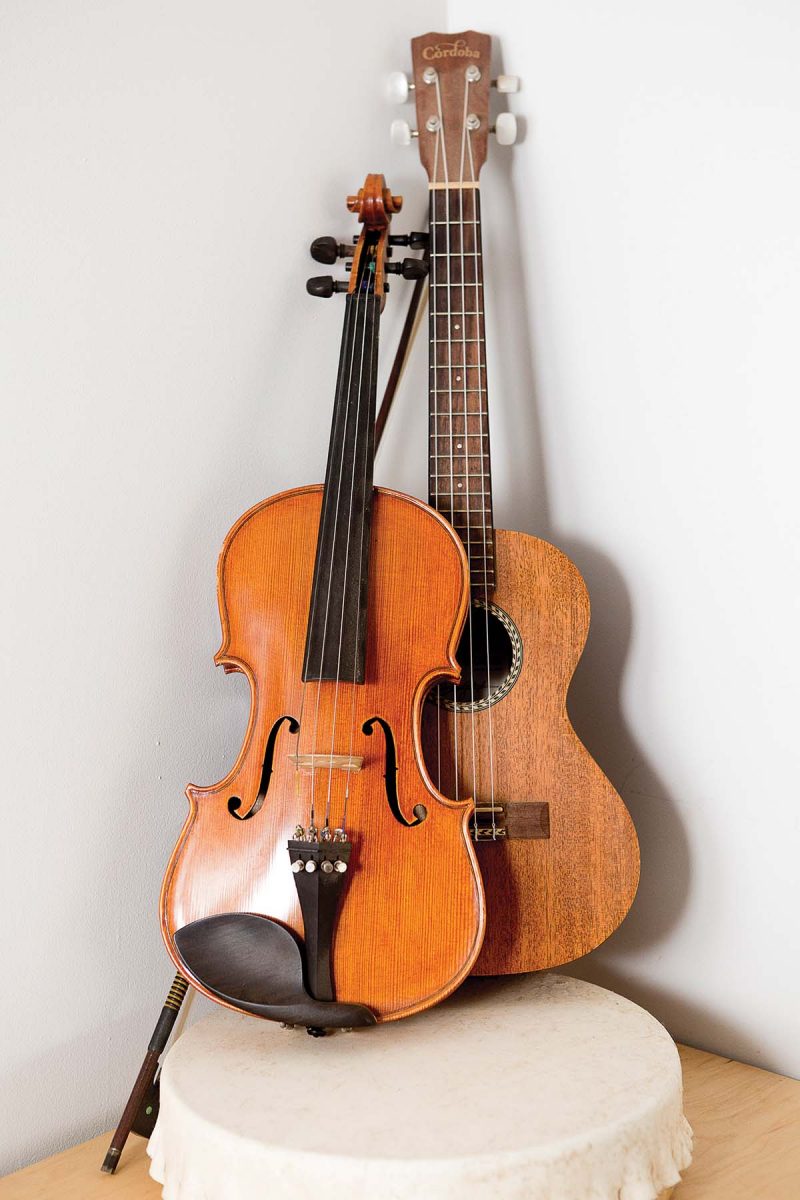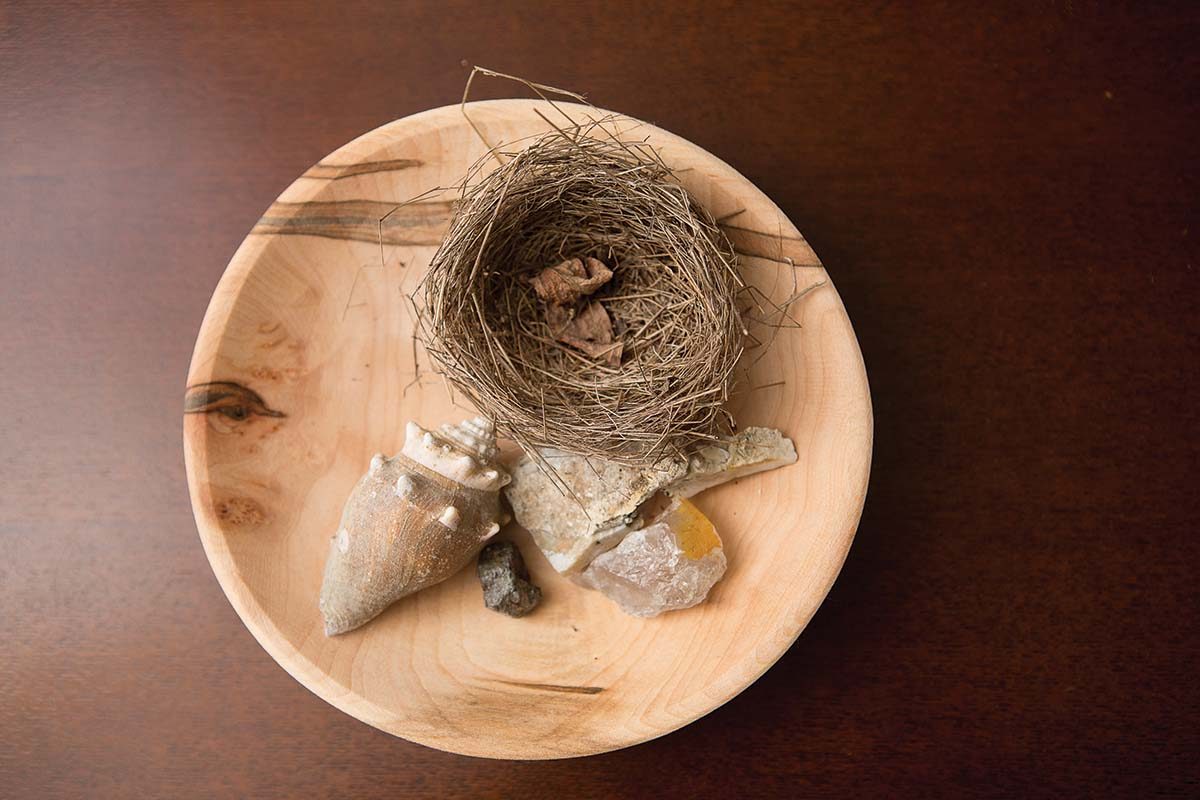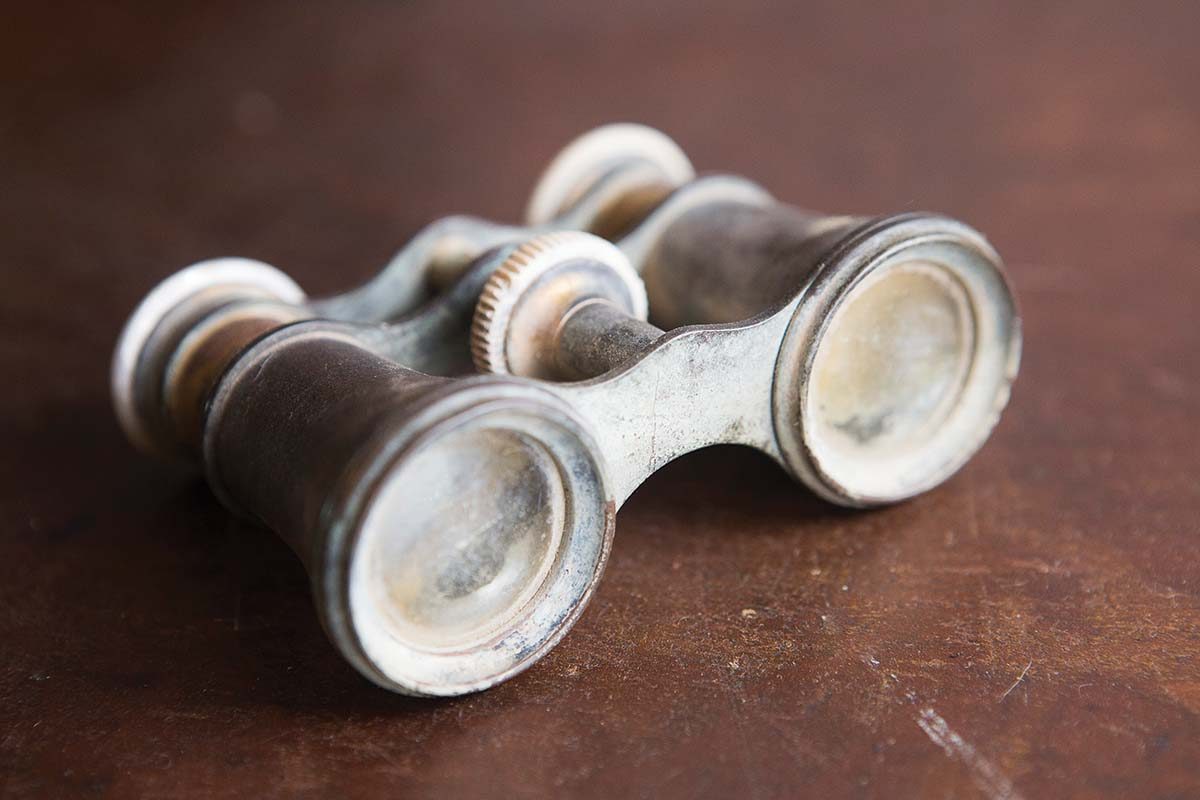Craft administrator finds equal fulfillment nurturing creatives and garden plots

Photo by Matt Rose
Erika Kofler and her partner Shane Maxson, a bread baker at Asheville’s Rhubarb restaurant, dubbed their Candler mountaintop home the “egg house” for its distinctive interior entrances. They’re not classically arched, but shaped like eggshell halves, giving the place a quirky feel and uncannily matching the couple’s agrarian lifestyle. They’ve been busy putting their vintage-inspired, nature-based stylistic stamp on the mountaintop modular, in between tending chickens and two vocal roosters, raising edible crops, co-creating a built-in bookcase, planning a small apple orchard — plus handling full-time jobs.

The interior offers a simple backdrop for the magical array of found and sentimental objects that fill their home — from bird feathers to seed pods. Others have stories, like the pair of Victorian-era brass opera glasses Maxson found in the Utah desert.



In the middle, a pair of opera glasses found, of all places, in the Utah desert.
Photos by Matt Rose
They’ve swapped out the old peach and yellow paint colors for sophisticated grays, and Kofler is currently engaged in a campaign to convince Maxson that a mustard shade would be perfect to replace the kitchen’s floral wallpaper. When Carolina Home + Garden caught up with them earlier this season, Kofler and Maxson had just finished a busy weekend planning their summer garden and preserving wild ramps from their property.
During the week, Kofler switches to a busy administrative role as Operations Manager at The Center for Craft in downtown Asheville, a multi-level organization that serves as a source of funding, professional connection, and display for the local and national maker communities. “I take care of the building and the people in it,” she says. The Center for Craft is located in the old Lark Publishing building on Broadway, and is undergoing a major renovation to enhance the space and allow for greater collaboration with local artists and organizations, including a co-working space for the creative sector. “I love the building — it houses the heart of [the Center],” she says.
Her work and home life are natural extensions of one another. “The local and slow-food movement has gained a great deal of momentum over the past decade, and the same is taking place within the maker community,” she explains. The Center’s “Craft City Food and Art” tours address the simpatico relationship, highlighting small-batch handmade producers of both food and fine craft in the downtown scene.
“It’s a real eye-opening experience,” says Kofler, who speaks to CH+G about the paths that led her here — and why she’s over the moon about her current situation.
You were born a globetrotter.
My dad’s from [the South Tyrol region] of Northern Italy, and Mom’s from Glasgow; they met on the Isle of Jersey in the Channel Islands and relocated to Bermuda, where I was born. We lived there until I was 7, at which time we moved to Italy for a year, before immigrating to the U.S., landing in Connecticut, where my aunt and uncle lived. When I was 10, we moved to Savannah [Georgia], living there until I went to college. Pursuing my education and work led me to many U.S. locales, including Texas, Florida, and West Virginia, but North Carolina’s the place I’ve lived the longest — nine years now.
Hospitality runs in the family?
Yes, my father was in hospitality his entire working life. I followed in his footsteps, and after studying hospitality at the University of Central Florida, I was fortunate to earn a position in food-and-beverage management at the Greenbrier Resort in White Sulphur Springs, West Virginia. In Western North Carolina, I worked for Biltmore Forest Country Club and Lake Toxaway Country Club.
You left your career to take on this very different life. Why?
I’d worked in hospitality a long time, and had dreamed of growing my own food, living closer to nature, and being more self-sufficient. Even when we lived in a small bungalow in West Asheville, we had a crazy-crowded garden plot and grew everything from sunflowers to sorghum. This way of living has been a huge part of Shane’s life for many years; meeting him helped everything fall into place.
Tell me a bit about this magical homestead.
We’ve got 13 acres — six are pasture, and the other seven go up the mountain to a bear preserve. We’ve only had one bear sighting, surprisingly. We’ve got 10 chickens and two roosters: Paddy and Lars, who used to be “Layla” before we found out she was a “he.” Candler has a rich history. This is Standhill Mountain, and Hominy Valley got its name for its hominy mills.
What are you growing this year?
Cabbage, kale, mustard greens, tomatoes, tons of herbs, peas, potatoes, sweet potatoes, broccoli, peppers, eggplant, tomatillos, and my favorite salad greens. Grocery-store produce can’t touch homegrown’s superior flavor and nutrition. Pulling dinner from the ground is so rewarding.
You’ve invested your hands and heart in growing food.
I believe strongly in food sovereignty. Large companies are destroying food diversity — it’s scary and tragic. It’s a miracle that planting one seed can yield a lifetime supply of food.
Your home’s character is shaped by an eye for nature and thrifting prowess.
We love natural things and antiques. If I could collect sewing machines, I would. [Kofler has two vintage ones, a pedal model and a 1941 Singer 99K electric sewing machine with a Gorilla finish.] Shane gave me this great antique Danish sewing box and vintage typewriter desk, and I have my Tante [Aunt] Anna’s large-scale needlepoint. Shane’s a musician, too, so we have a Native American flute, ukulele, banjo, fiddle, and jaw harp.
It’s not often that an interviewer gets treated to a stunning tray of edibles upon arrival.
This platter has rosemary-infused cheese, mortadella, cornichon pickles, grapes, apple, and quicos (corn nuts). I can’t help myself, after being in hospitality for so long.
The Center for Craft, 67 Broadway, Asheville, 828-785-1357, centerforcraft.org.
